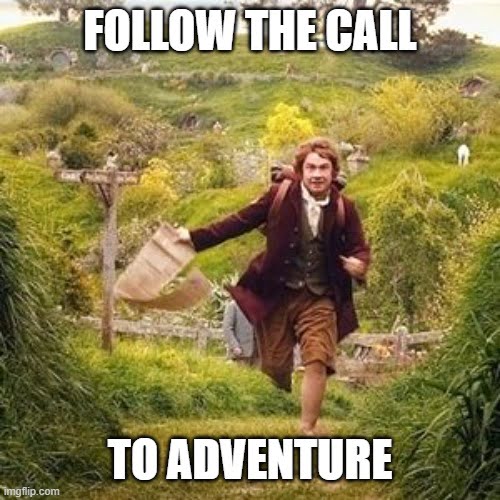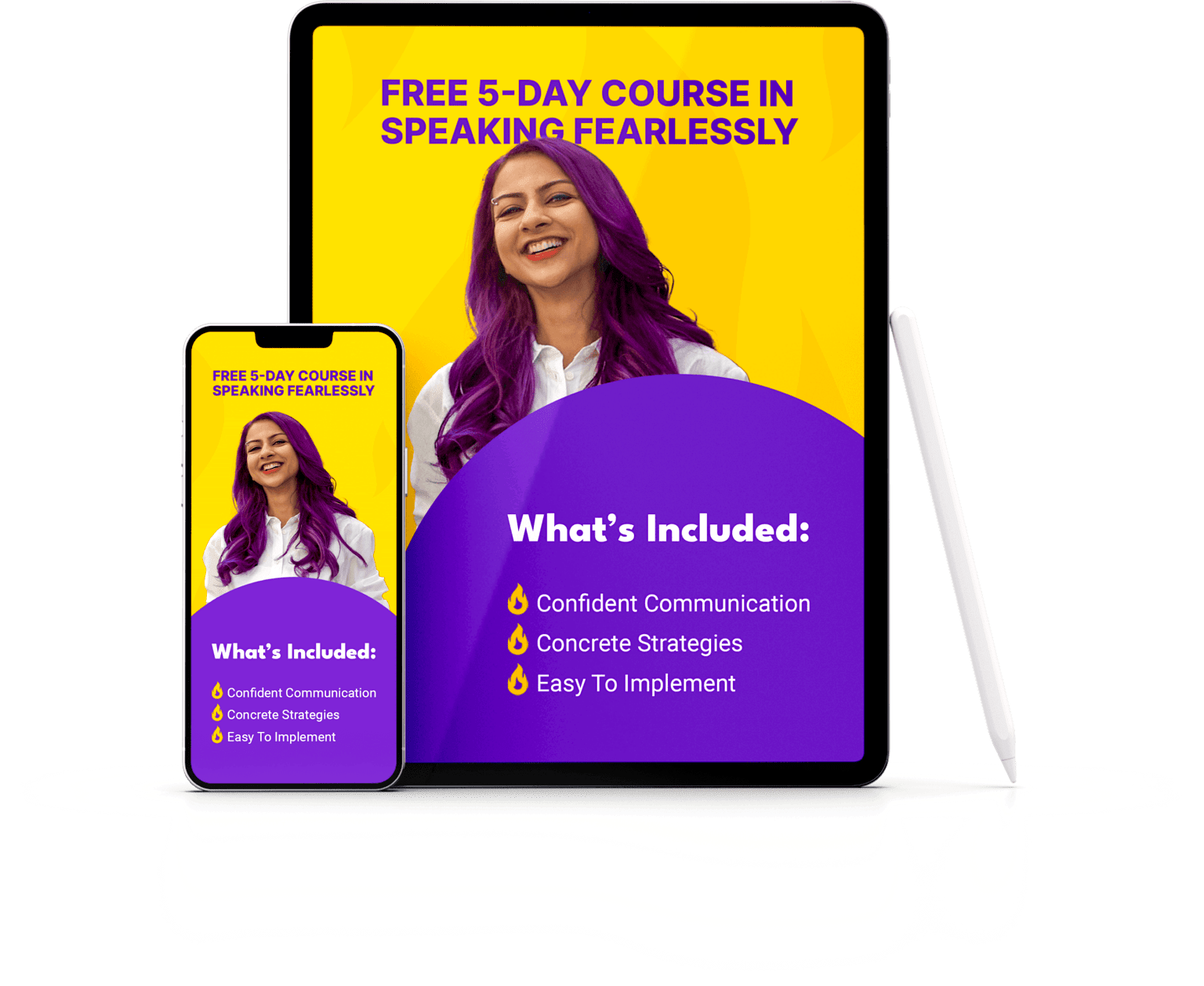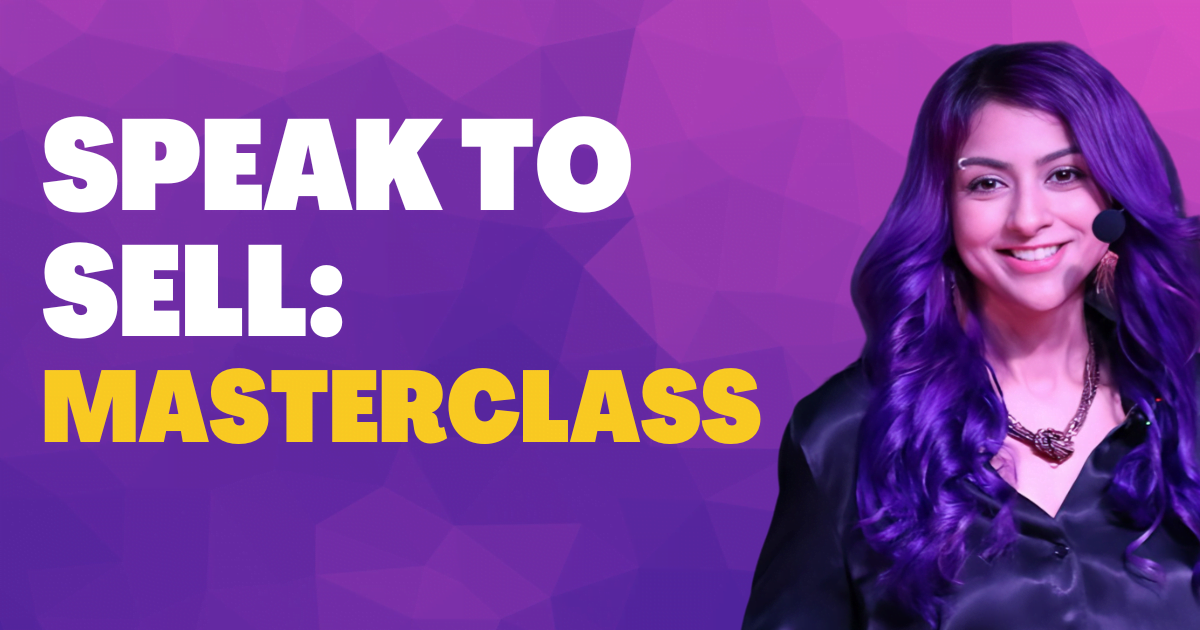When my clients tell me, “I’m going to present at a conference!” their voices carry a mix of excitement and fear.
Usually, the next question is, “How should I introduce myself?”
Many entrepreneurs run into a roadblock when it comes to introducing themselves and their work. Sometimes it’s imposter syndrome and sometimes it’s being too close to your work to know how to describe it. But if you’re speaking at a conference, doing a podcast, or going to a networking event, you’ll need to introduce yourself. Not just once but over and over.
Crafting a strong, memorable introduction or “origin story” will help you become unforgettable. It gets you one step closer to landing that deal or building that relationship.
Here are 5 impactful ways to introduce yourself and share your origin story.

Table of Contents
1. Introduce through an Elevator Pitch

An elevator pitch is a quick pitch that you could say in the time it takes to ride an elevator (around 30 seconds long).
Many believe that Elisha Otis was the first person to give a true “elevator pitch.”
In 1853, elevators already existed, but many of them were dangerous: “only as stable as their weakest rope.” Otis created a mechanism that would make the elevator safer. But instead of explaining it in complex terms, he set up an elevator shaft at a convention, stood inside the elevator, and cut the supporting rope with an ax.
At first the crowd gasped – until they saw that Otis’ stopping mechanism safely stopped the elevator. It took him less than 30 seconds to demonstrate the value of his product.

Photo by Elisha Otis’s elevator patent drawing, 1861.National Archives
Where to use the elevator pitch
Other than literally in the elevator, you can use the elevator pitch anytime you have 5-10 seconds to make a memorable first impression.
Use this pitch when you’re introducing yourself at a networking event, going round the room in a meeting or doing a quick intro in a coffee chat with a prospective client.
How to create an elevator pitch
Want to try an elevator pitch out for yourself? Here’s how:
- Think of your pitch as the hook. Your elevator pitch is the springboard to get you started.
- It doesn’t need to be overly detailed. You don’t need to tell people everything about who you are and what you do. You just need to spark curiosity and arouse interest. Get them to ask you follow-up questions.
- Make it memorable. Use an analogy or a quick comparison. Use a reference that will make them remember your pitch.

Examples of memorable elevator pitches
Here are some examples of elevator pitches by successful entrepreneurs and thought leaders:
- Simon Sinek: “I help people find the why in everything they do”.
- Brené Brown: “I’m a mum to five and my heart work is really helping individuals and teams find their courage”
- Guy Kawasaki: “I’m on a mission to make people remarkable.”
Bonus:
My LinkedIn tagline (check it out here) is a simple, “I transform you into a confident speaker.” Here I am speaking directly to the target customer – you.
2. Introduce a Classic Origin Story – Hero’s Journey
Everyone loves a good hero story. The most impactful ones center around a change, whether it was gradual or a rapid pivot from one kind of person to another.
A “muggle” changes perception of reality by discovering “magic”. A child grows up wishing he could have stopped the crime that led to his parents’ death and becomes a vigilante to make the city a better place. An old wartime hero discovers what it’s like to live in the future.

The hero’s journey is very effective in situations like podcasts or conferences when you’re asked to share who you are and what you do.
How to create the “hero’s journey” origin story
Here’s how to use the classic hero’s journey to structure your origin story.
1. Background
Set the scene for what life was like before you ended up where you are today.
Here are a few phrases you can use to start your origin story:
- “I was…”
- “At first, I tried…”
- “Life was like this…”
Your background is the “normal,” everyday world you were living in before the big change in your professional journey happened.

Ask these questions to develop your background:
- What was life like before my big transformation/turning point?
- What was I doing at that time?
- How did I feel?
2. Call to adventure
This step highlights the first time something changed from the “ordinary”. It could be the first time you realized things couldn’t go on the way they were. It could be the first major challenge you faced. It could be a single conversation or a single action you took (“I quit!”) that starts the big change.
Typically, the call to adventure begins with:
- “But then…”
- “One day…”
- Suddenly, I…”

Ask these questions to formulate your call to adventure:
- What was the big challenge in my life then?
- Was there a specific event that made me question or realize something?
- Did I find my superpower? How?
3. Action, obstacles and complications
Talk about the obstacles you ran into along the way in your entrepreneurial journey.
Here are some things to start this part of the story:
- “So I…”
- “I chose to…”
- “Then I decided…”
Describe what you did after you realized something needed to change.

Ask these questions to outline your action/obstacles/complications:
- What choices did I have?
- How did I face the challenges?
- What obstacles did I overcome?
4. Change/turning point
The moment of change is the big transformation that happened to you. It’s the choice that brought you to where you are in the present day.
Pro tip: I highly recommend formulating a single turning point. This could be the point where your efforts started bearing fruit. Or it could be when you changed something critical in your strategy that got you to where you are now.
Ask these questions to find your turning point:
- What was the one thing that happened to change the way things were going?
- What was the first point I realized that all my efforts were working?
- What did I change in my strategy to get me better results?
5. A transformed life
Describe how your world has changed now as a result of your journey.
You can begin this part of the story by:
- “And now…”
- “Ever since then…”
- “I don’t ___ anymore…”
Paint a picture to show how different your life is compared to how things were at the beginning of the story. This shows victory and triumph over the struggle.

These questions can help with formulating your new reality:
- What do I do now?
- In what ways do I approach my mission at work differently?
- How has my business grown as a result?
6. Meaning
Every important change in our lives holds meaning for us and for our work. What does going through that change mean to you and how does it bring new color and insight to the way that you approach work now? Talk about why it was so meaningful.
Origin stories of legendary entrepreneurs:
- Steve Jobs (Apple). Jobs was interested in technology and worked for Atari, but became ill and had to quit. He met Wozniak and made the first Apple computer, but several years later, was phased out of his own company, before returning a year later. It was after this time that Jobs created the iMac, iBook, and iPod.
- Walt Disney (Walt Disney Studios). When Walt’s dreams of becoming a cartoonist were nearly realized, he and his brother (Roy) lost the rights to one of their animated characters, Oswald the Rabbit. Instead of giving in to defeat, he and his team created Mickey Mouse in 1928, paving the way for success.
- Jack Ma (Alibaba). Born to poor parents in China, Jack was no stranger to rejection: he failed his exams, didn’t get into Harvard, and was the one person who didn’t get a job at KFC. But he used those failures to learn, and when he realized that China was not on the internet, he saw the opportunity to put them on the web… and Alibaba soon became a household name.

My favorite example is Mel Robbin’s origin story:
“Fifteen years ago, I hit rock bottom and nearly lost everything I cared about in life. My anxiety was so bad, I could barely drag myself out of bed. Today, I’m one of the most respected experts on change and motivation in the world.”
3. The problem – solution intro
Here’s another way to introduce yourself: talk about the problem your target customer has and how you’ve got the solution. This one’s similar to an elevator pitch, but dives into more detail.
How to create a problem-solution intro
Here’s how you can create an intro based on the problem-solution format:
- Start with the problem. Make the problem relatable to your target audience: this shows that you know what they’re going through. E.g.: “You know how you’re an expert in your field – but no one knows about it?”
- Press into the problem. Talk about why the problem is difficult. What is it preventing your target audience from achieving? E.g.: “It’s not because you don’t have enough followers on social media. It’s because you’re forgettable when you speak”.
- Show the solution. Show them how to solve it through your product or solution. E.g.: “I help subject matter experts become thought leaders by transforming the way they speak”.
Use a problem-solution intro when you want to showcase how you solve a problem for your ideal clients.

Examples of problem-solution introductions
Here are some problem-solution introductions these super-successful entrepreneurs could have used:
- Madam CJ Walker (inventor of Wonderful Hair Grower). “For many women, hair is a matter of pride, which makes it all the more painful when one experiences scalp problems that lead to hair loss. Not only did I experience this myself, but I know many other black women who faced this problem. That’s why I created the Walker Method and formulated the Wonderful Hair Grower. I used these products and techniques myself and was able to regrow my hair. If it could help me, it can help you too.”
- Simon Sinek (The Optimism Company). “The average person spends 90,000 hours at work over a lifetime. That’s one-third of your life – and life is too short for you to spend it dreading the grind every Monday morning. With our help, you can wake up every morning inspired, feeling safe, and being fulfilled in your work.”
- Jeff Bezos (Amazon founder). “Buying books at a bookstore is a great experience until you’re looking for a book that’s not in stock. If that’s the case, you have to order it, then return to the bookstore at a later date to pick it up. Why not skip all the extra steps and order it online, to have it shipped to your doorstep? With Amazon’s user-friendly platform, you can do that and get it at a discounted price!”
4. The metaphorical intro
You’ve heard these and you remember these. “This is the Airbnb of bee farms”. “This is the Shazam for plants”. “It’s like ketchup but without the extra sugar and chemicals”. Using a metaphor to describe or analogize your business helps make it sticky for your audience. This can be a game-changer – it helps you stand out and be remembered.
How to create a metaphorical intro
Develop a metaphor or analogy to introduce you or your business.
Start with a few different metaphors/analogies to introduce you or your business. Then narrow it down to the one that is most fitting and easily understandable. An entrepreneur once told me, “I’m like an airport terminal – I connect people from different walks of life.” I immediately understood that she was an amazing networker and her value proposition was in how she utilized her rich network to create opportunities.
Examples of metaphorical introductions
Here are some metaphorical introductions famous entrepreneurs could use:
- Elon Musk (Tesla). “I created the Porsche of electric vehicles.”
- Sara Blakely (Spanx). “Silky products that sculpt you like the work of art you are.”
- Arianna Huffington (HuffPost). “We created the NY Post for women.”

5. The simple, clean, tight intro
The best strategy is sometimes the most overlooked: a simple introduction. There’s a reason why it’s the last on this list – it’s the least creative. But it can serve you well if done right.
How to create a simple intro
The structure for a simple introduction is super easy. Just state who you are, what you do, and your greatest accomplishment so far.
Examples of simple introductions
Here are some simple introductions famous entrepreneurs use:
- Steven Bartlett. An entrepreneur, speaker, investor, author, and the host of UK’s No. 1 podcast, “The Diary of a CEO.”
- James Clear. I’m the author of the #1 New York Times bestseller, Atomic Habits, which has sold more than 15 million copies worldwide and been translated into over 50 languages.
- Adam Grant. An organizational scientist and bestselling author who explores the science of motivation, generosity, rethinking, and potential.
Tell Your Story Fearlessly
Your introduction is covered – now what about the rest of your presentation?
If you want to become the most confident speaker in the room (but need some coaching to get there), that’s what I do. With my help, you can overcome nerves, feel at ease talking to any audience, and use your energy and voice to propel your message forward. Let’s talk!



